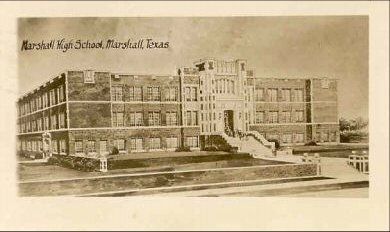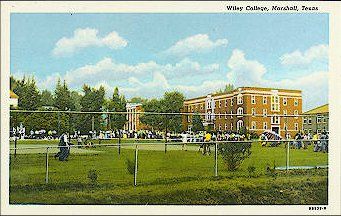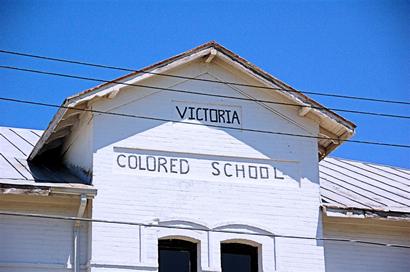Segregation in Two Texas Towns. (original) (raw)
More than twenty-five years ago Bill Moyers won an Emmy for a PBS documentary featuring the �two worlds� of Marshall, Texas, his home town. The film focuses on life in Marshall during the Great Depression and World War II, the time of Moyers� boyhood. As a youngster, Moyers was hardly aware of the black community in Marshall, though it made up approximately 50% of the population. It was an autonomous community with churches, a variety of businesses, and two colleges: Wiley and Bishop.
| When he was a boy, Moyers occasionally saw black people when they shopped in department stores. He also observed that some black women came daily to work as domestics in the homes of whites, and black men often came to the white section to do yard work. Moyers realized that these black people were ignored as �real� people who had lives of their own beyond their duties as workers. In a sense, the blacks were invisible, as Ralph Ellison portrays his narrator in the novel Invisible Man. | | | ---------------------------------------------------------------------------------------------------------------------------------------------------------------------------------------------------------------------------------------------------------------------------------------------------------------------------------------------------------------------------------------------------------------------------------------------------------------------------------------------------------- | |
| Ironically, after Moyers left Marshall, he became interested in learning all he could about the black community in his home town. For example, he learned that Melvin Tolson, a black poet whose work he admired, taught English literature at Wiley College during the time Moyers was a student at the all-white Marshall High School. Tolson gave readings and lectures at black colleges churches in Texas and Oklahoma. Tolson also organized a debate team at Wiley that won a national debating contest against the Harvard University team in 1935. Moyers began a collection of materials that he used in writing a biography of Tolson. Denzel Washington produced a film, The Great Debaters, based on the Wiley-Harvard debate. | | | -------------------------------------------------------------------------------------------------------------------------------------------------------------------------------------------------------------------------------------------------------------------------------------------------------------------------------------------------------------------------------------------------------------------------------------------------------------------------------------------------------------------------------------------------------------------------------------------------------------------------------------------------------------------------------------------------------------------------------------------------------------------------------- | |

Marshall High School
Postcard courtesy www.rootsweb.com/ %7Etxpstcrd/

Wiley College
Postcard courtesy www.rootsweb.com/ %7Etxpstcrd/
In 1954 I began my teaching career in Big Sandy, a town thirty miles from Marshall. The two worlds depicted in Moyers� film also existed in that small town at the juncture of the Texas and Pacific and the St. Louis Southwestern Railways. The blacks lived south of the tracks, an area where we whites seldom had occasion to visit. Occasionally, I would meet a black man or woman coming out of the post office as I entered, but I hardly considered ever becoming acquainted with them. Once during the two years I lived in Big Sandy I drove past the frame building that housed the three-teacher school for blacks. Another time, I drove past a black church on a Sunday evening specifically because a colleague told me that I should hear the choir. I drove slowly past the church absorbing the sounds of a hymn interspersed with the sounds of �Amen.� With my car window rolled down, I could also hear the shuffling of feet on the bare wooden floor of the church.
On the day before classes began at Big Sandy the first year I taught there, the three black teachers came to a general faculty meeting at the school for whites, a two-storey red brick building set on the highest hill in town. The superintendent introduced the black teachers. Though I spent two years there, I never saw the black teachers again, nor did I inquire about them. Now, I wonder in what ways my experience at Big Sandy would have been different if I had become acquainted with these colleagues.
In the spring of 1955, not long after the Supreme Court decision that found segregation in the schools illegal, a student in my ninth-grade English class asked me whether I would teach a Negro. �Yes,� I told the student, �I would. I�m hired by the School Board to teach the students sent to me.� Clearly, he was disappointed by my answer. In 1957 I began teaching at The Victoria College, where I first taught black students, only a few in number. � Robert Cowser May 28, 2008 Column
Related Topics: Texas Schoolhouses |
Texas History | Texas Towns | Texas | Columns |

Custom Search
